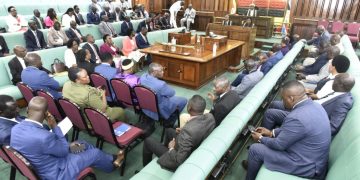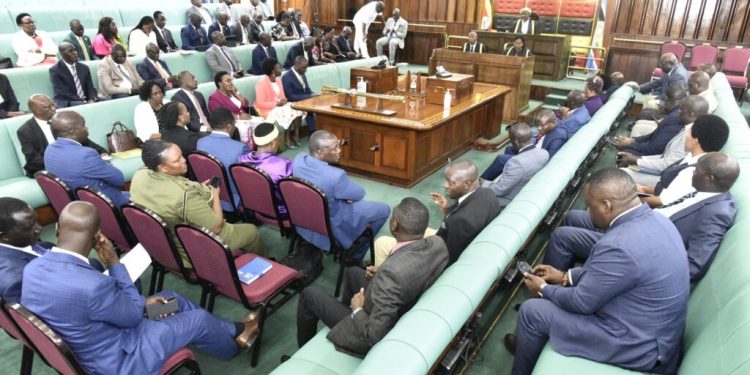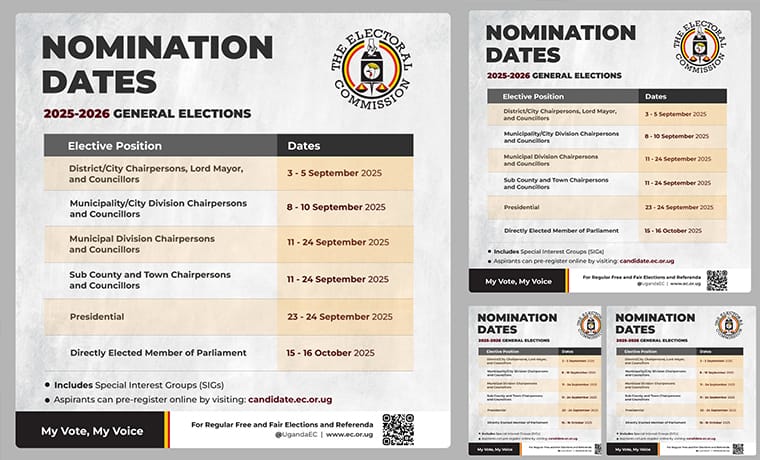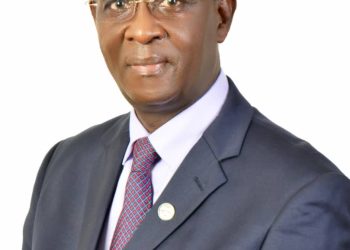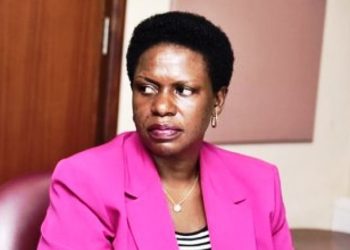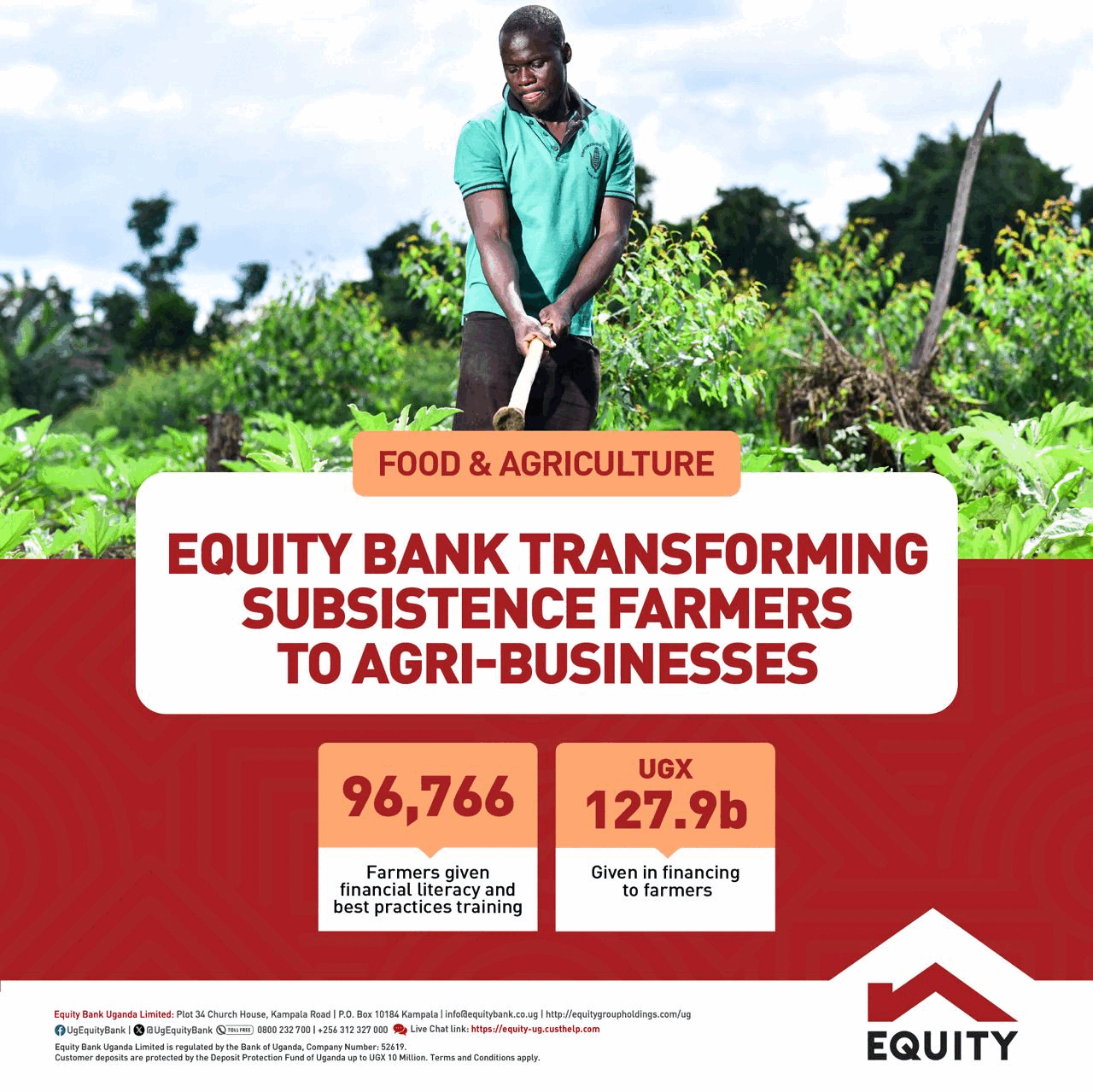By Mulengera Reporters
The Ministry of Finance, Planning, and Economic Development has retained the same theme and priorities for Uganda’s national budget for the 2025/26 financial year, mirroring those of the current fiscal year. On Thursday, the government tabled budget estimates worth UGX 71.9 trillion before Parliament, marking a significant increase from earlier projections.
Parliament was recalled from recess to receive the budget, which was presented by Henry Musasizi, the State Minister for General Duties. Deputy Speaker Thomas Tayebwa directed sectoral committees to process the estimates and report back by April 8, ahead of the resumption of plenary sittings on April 9.
“In line with Section 13 (2) of the PFMA and Rule 48 of our Rules of Procedure, I refer the estimates and the attendant documents to the Committee on Budget and Sectoral Committees. Each sectoral committee should analyze relevant sections and report back by April 8 so that we can process them in plenary before they are forwarded to the Budget Committee,” Tayebwa stated.
Budget Growth and Resource Allocation
The budget estimates show an increase of over UGX 19 trillion from the UGX 52.44 trillion in the Budget Framework Paper (BFP) tabled in December 2024. This increment follows Parliament’s recommendations to allocate funds for previously unfunded priorities across ministries, departments, and agencies (MDAs) during the BFP review.
If approved without major alterations, the 2025/26 national budget will be slightly lower than the UGX 72.1 trillion approved for 2024/25. However, after three supplementary budgets, the current financial year’s total expenditure has swelled to nearly UGX 77 trillion.
Theme and Key Priorities
Like the ongoing financial year, the 2025/26 budget will be guided by the theme:
“Full monetization of the Ugandan economy through commercial agriculture, industrialization, expanding and broadening services, digital transformation, and market access.”
Minister Musasizi outlined key budget priorities, which include:
Maintaining peace, security, and the rule of law.
Human capital development (health, education, water, and social protection).
Full monetization of the economy.
Infrastructure development.
Regional integration.
Expanding irrigation through bulk-water systems to stabilize agriculture.
Promoting manufacturing with a focus on industrial parks.
Strengthening anti-corruption measures.
Conservation and protection of natural resources.
Enhancing economic integration at national and regional levels.
“This budget incorporates priorities set during extensive consultations with Cabinet, Parliament, the NRM Parliamentary Caucus, and the Presidential Advisory Committee on the Budget,” Musasizi stated.
Sector Allocations and Adjustments
While the breakdown of the revised UGX 71.9 trillion budget is yet to be fully disclosed, the original BFP allocations for key sectors included:
UGX 22.1 trillion for the National Development Plan implementation.
UGX 9.9 trillion for human capital development.
UGX 7.5 trillion for governance and security.
UGX 6.3 trillion for integrated transport infrastructure and services.
UGX 1.8 trillion for private sector development.
UGX 1.6 trillion for agro-industrialization.
UGX 1.3 trillion for sustainable energy development.
UGX 1.1 trillion for sustainable urbanization and housing.
Other proposed allocations in the BFP included:
UGX 833.5 billion for Parliament.
UGX 512.7 billion for the Judiciary.
UGX 635.9 billion for the extractives industry.
UGX 411.5 billion for natural resource development.
Potential Budget Increases
Several additional allocations were recommended by Parliament when approving the BFP, which could be included in the final budget:
UGX 145 billion to restore the Parliamentary Commission’s budget to current operational levels.
UGX 100.4 billion for Parliament’s projected non-wage recurrent shortfalls.
UGX 78.6 billion to cover development budget shortfalls.
UGX 12.12 billion for ICT infrastructure upgrades and the rollout of the e-Parliament project.
UGX 72.2 billion to restore the Judiciary’s budget to its current level.
UGX 50.1 billion to facilitate additional court sessions and reduce case backlogs.
UGX 30 billion for the Uganda Police Force to maintain CCTV cameras.
UGX 22.5 billion for the Inspectorate of Government’s permanent office construction.
UGX 450 billion for the Electoral Commission to meet statutory deadlines for the 2026 general election roadmap.
As Parliament reviews the estimates, the final budget will determine whether these additional allocations are incorporated before the final approval process-Parliament watch. (For comments on this story, get back to us on 0705579994 [WhatsApp line], 0779411734 & 041 4674611 or email us at mulengeranews@gmail.com).
